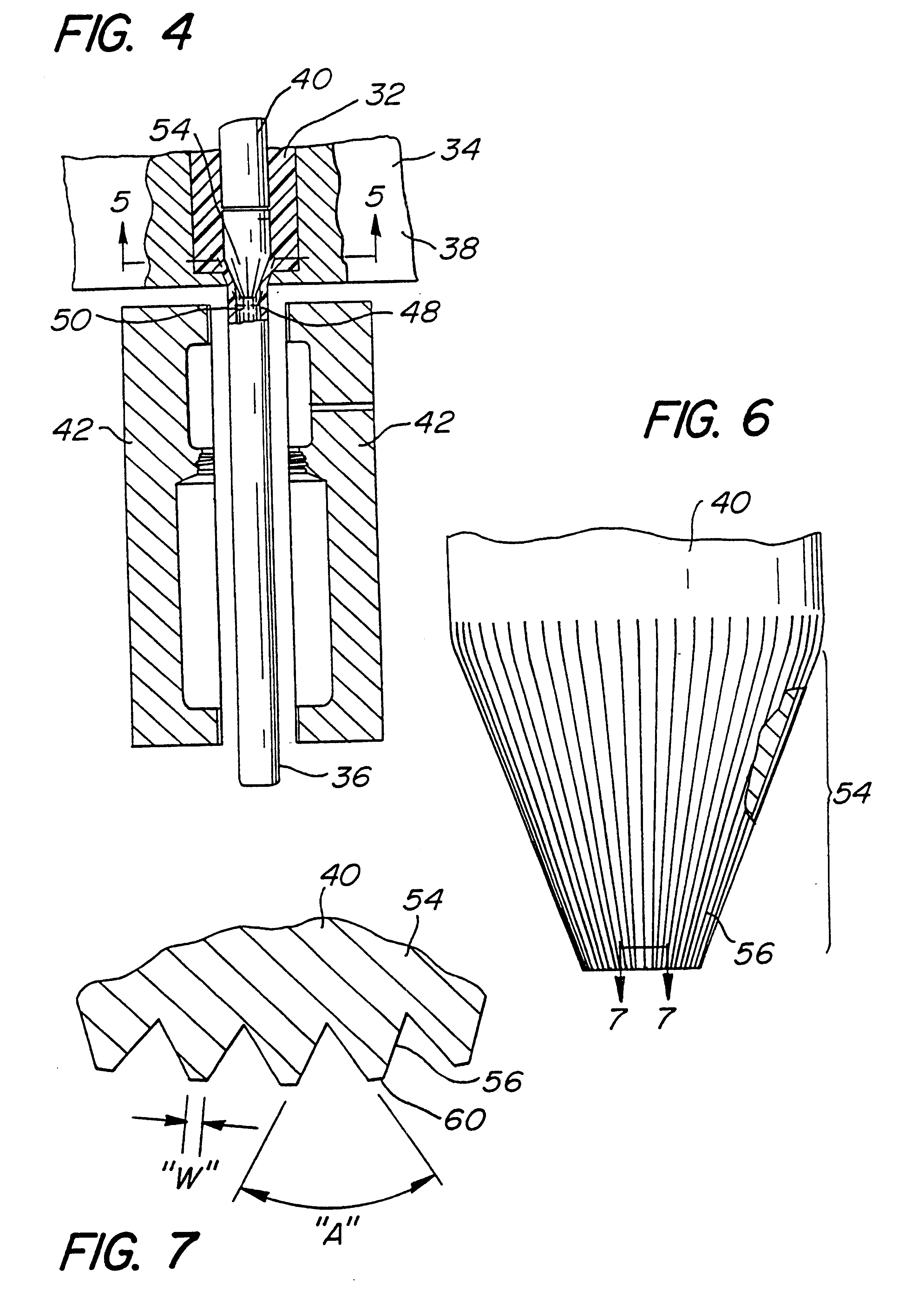Blow-molded container having reinforcement ribs and method and apparatus for making same
a technology of reinforcement ribs and containers, which is applied in transportation and packaging, water/sewage treatment by ion exchange, and separation processes, etc., can solve the problems of reducing limiting the ability of manufacturers to reduce the amount of plastic consumed, and significant expense in the manufacture of blow-molded containers. achieve the effect of stiffening the container, enhancing structural performance, and enhancing top loading capability
- Summary
- Abstract
- Description
- Claims
- Application Information
AI Technical Summary
Benefits of technology
Problems solved by technology
Method used
Image
Examples
Embodiment Construction
The container 10, discussed above, is produced by a novel method which is best illustrated in FIGS. 4 and 8. Molten plastic 32 is extruded through an extrusion head 34 to form a downwardly depending tubular parison 36. The extrusion head includes a die 38 and a mandrel 40.
As illustrated in FIG. 4, a pair of mold blocks 42 are positioned in an open condition adjacent the downwardly extending parison 36. When the parison is extruded a sufficient distance, the mold blocks 42 close around the parison 36 as illustrated in FIG. 8. A blow pin (not shown) is inserted into the mold 42 and the parison 36 to inflate the parison 36 into a container 44. After the container 44 is removed from the mold 42, the plastic moil 46 is removed and recycled.
A unique aspect of the method of the present invention is that the parison 36 is extruded with an inner peripherals wall 48 that has a number of continuous, longitudinally and inwardly extending ribs 50. Thus, the resulting container 44 is formed with ...
PUM
| Property | Measurement | Unit |
|---|---|---|
| Length | aaaaa | aaaaa |
| Width | aaaaa | aaaaa |
| Length | aaaaa | aaaaa |
Abstract
Description
Claims
Application Information
 Login to View More
Login to View More - R&D
- Intellectual Property
- Life Sciences
- Materials
- Tech Scout
- Unparalleled Data Quality
- Higher Quality Content
- 60% Fewer Hallucinations
Browse by: Latest US Patents, China's latest patents, Technical Efficacy Thesaurus, Application Domain, Technology Topic, Popular Technical Reports.
© 2025 PatSnap. All rights reserved.Legal|Privacy policy|Modern Slavery Act Transparency Statement|Sitemap|About US| Contact US: help@patsnap.com



